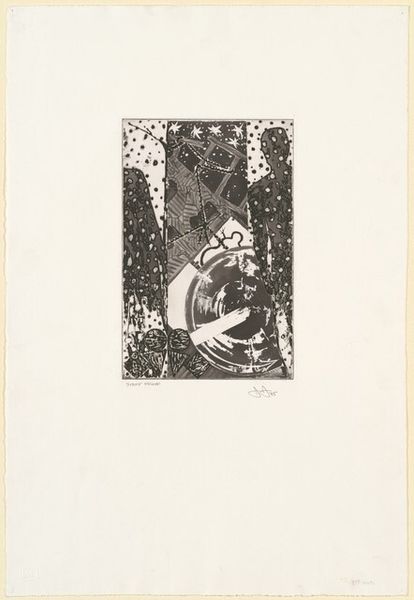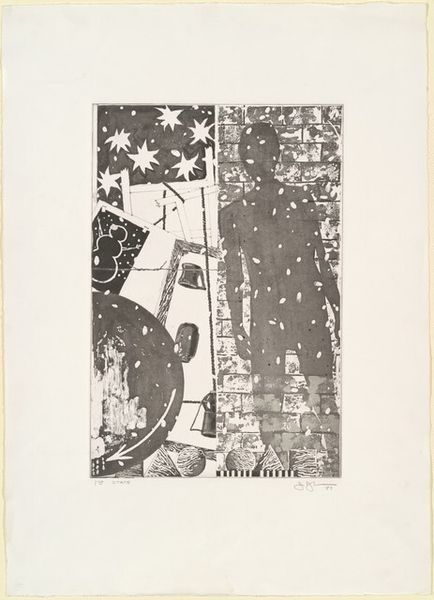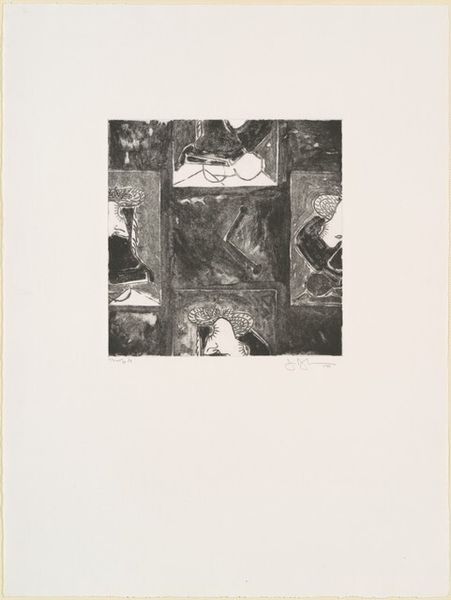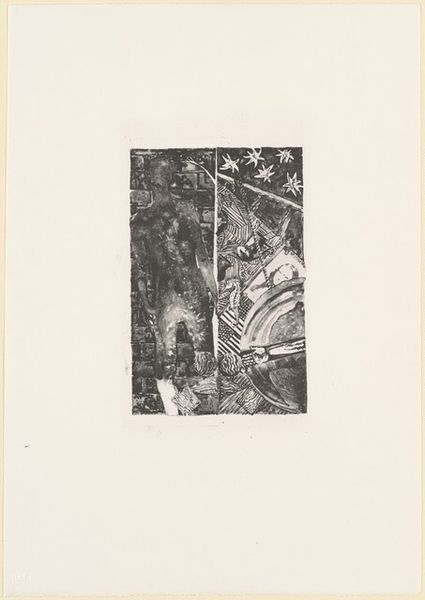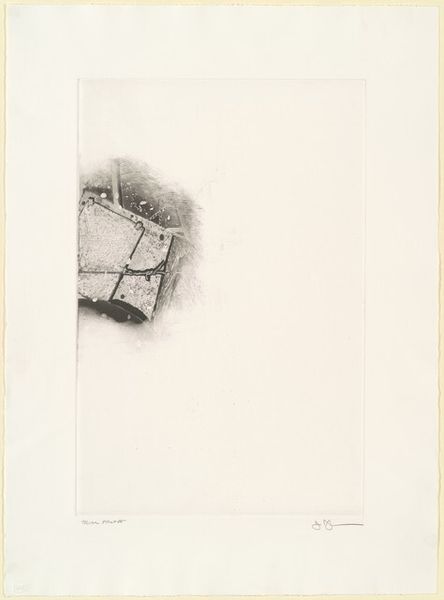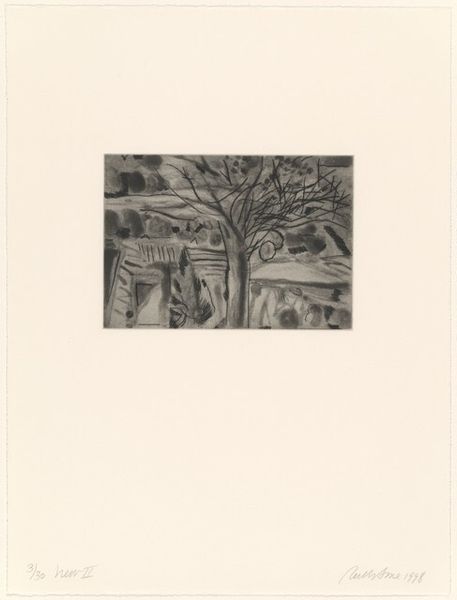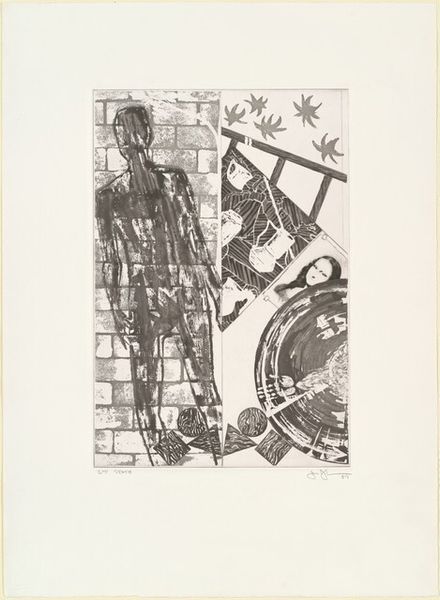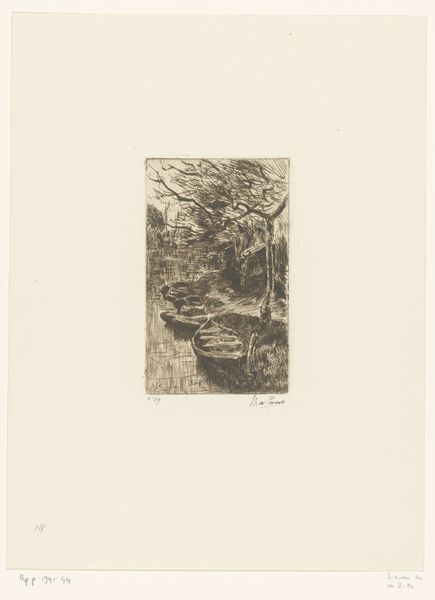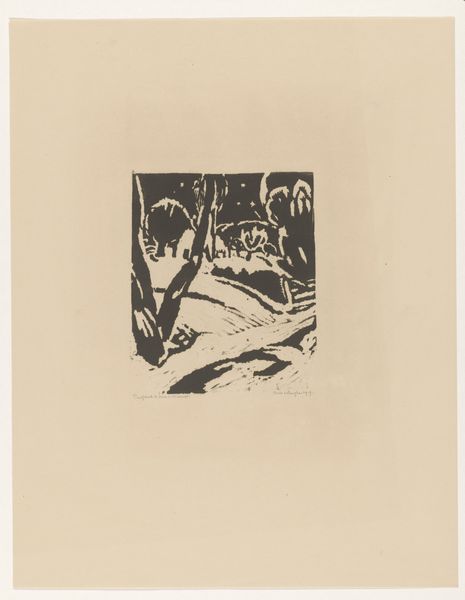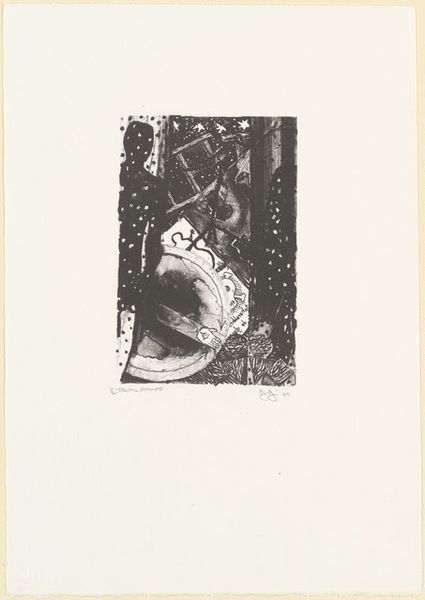![Summer (Frontispiece for "Poems" by Wallace Stevens) [proof 3rd state] by Jasper Johns](/_next/image?url=https%3A%2F%2Fd2w8kbdekdi1gv.cloudfront.net%2FeyJidWNrZXQiOiAiYXJ0ZXJhLWltYWdlcy1idWNrZXQiLCAia2V5IjogImFydHdvcmtzL2YxODM2OTVmLWM0NWMtNDhiOS05NTc3LTczYWZlOGNlZjYyYi9mMTgzNjk1Zi1jNDVjLTQ4YjktOTU3Ny03M2FmZThjZWY2MmJfZnVsbC5qcGciLCAiZWRpdHMiOiB7InJlc2l6ZSI6IHsid2lkdGgiOiAxOTIwLCAiaGVpZ2h0IjogMTkyMCwgImZpdCI6ICJpbnNpZGUifX19&w=1080&q=75)
Summer (Frontispiece for "Poems" by Wallace Stevens) [proof 3rd state] 1985
0:00
0:00
mixed-media, print, etching, paper, graphite
#
mixed-media
#
contemporary
#
narrative-art
#
ink paper printed
# print
#
etching
#
figuration
#
paper
#
neo-dada
#
abstraction
#
graphite
Dimensions: sheet: 55.56 x 38.1 cm (21 7/8 x 15 in.) sheet: 24.77 x 16.19 cm (9 3/4 x 6 3/8 in.)
Copyright: National Gallery of Art: CC0 1.0
Curator: So here we have Jasper Johns’ “Summer (Frontispiece for 'Poems' by Wallace Stevens) [proof 3rd state]” from 1985, rendered in mixed media: etching, graphite, and who knows what else layered upon paper. Quite a mouthful, eh? Editor: It's initially dark and busy. The eye doesn’t know where to land first. All this intricate crosshatching—like a congested city street at dusk. Curator: Congested! Yes, a great way to describe the composition. Notice the shadowy figure to the left—almost melting into a brick wall. Is he emerging or disappearing? Johns is brilliant at creating this kind of ambiguous space, that liminal zone between states. The idea of summer and also these images crammed together might evoke the abundance but also sensory overload that comes with the heat of summer. Editor: That brick wall itself speaks volumes. A symbol of industry, urban constraint... juxtaposed with what appears to be a skeletal hand gripping something, perhaps another tool of labour. It makes me wonder about the socio-economic conditions under which these materials were processed, produced, and then reconfigured as "art." Was there something to say there about labor conditions that impact someone's perception of summer, too? Curator: Ah, I see your wheels turning! The skeletal hand, for me, lends it all an element of vanitas, reminding us of the fleeting nature of, well, everything. The summer heat, brick, ink, or the season of one’s life. Speaking of process, notice how the artist doesn’t try to hide the etched line, and some areas, like the figure's head, is simply left blank, inviting us to fill in the blanks and get immersed in his process and imagery! Editor: Precisely. The “filling in,” however, becomes labour for the viewer. And given that this was meant as a frontispiece to poetry, how do the textual and visual elements coalesce, collide, or perhaps even resist one another? Where did the paper originate? The ink? We should reflect on those unseen hands. Curator: It’s a kind of visual poem itself. It refuses to offer easy answers or resolutions, mirroring life's very beautiful, complicated uncertainties. That’s something I think Stevens' poems explore as well: looking closely at the everyday to glean meaning and beauty and truth from something like heat on pavement, too. Editor: And perhaps, interrogating how our very notions of “meaning” and “beauty” are inextricably linked to the modes of production. Now that’s what I call illuminating summer reading.
Comments
No comments
Be the first to comment and join the conversation on the ultimate creative platform.


